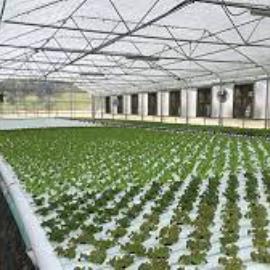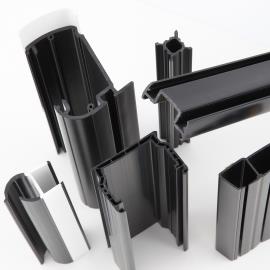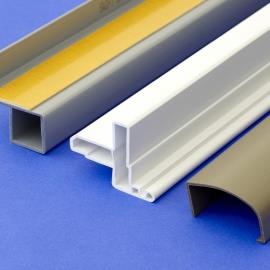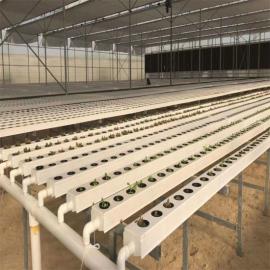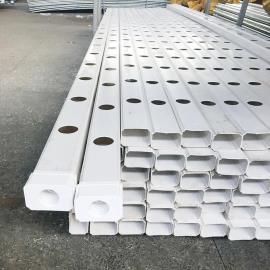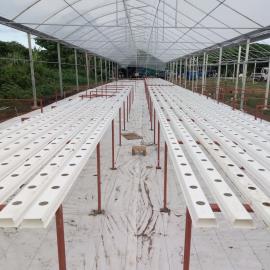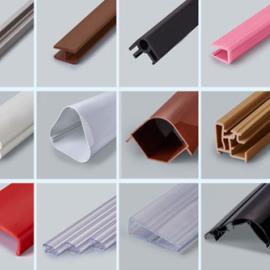The Rise of Vertical Farms: Exploring Commercial Hydroponic Innovations
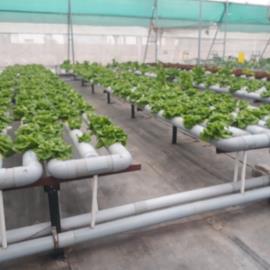
The Rise of Vertical Farms: Exploring Commercial Hydroponic Innovations
Vertical farming has emerged as a game-changer in modern agriculture, offering a solution to the challenges of limited space and resources. With the advancement of commercial hydroponic systems, vertical farms are revolutionizing the way we grow crops. In this blog, we will delve into the concept of vertical farms and explore the innovative commercial hydroponic techniques driving this agricultural revolution.
I. The Concept of Vertical Farms
Vertical farms are indoor facilities that utilize vertical space to grow crops in a controlled environment. Unlike traditional farms that spread horizontally, vertical farms stack plants on multiple levels, optimizing space utilization. This approach allows for year-round cultivation and higher crop yields compared to conventional methods. With the advancements in commercial hydroponics, vertical farms have gained popularity and are transforming urban landscapes.II. Commercial Hydroponic Innovations in Vertical Farms
Commercial hydroponic systems play a vital role in vertical farms, providing the plants with essential nutrients without the use of soil. These systems have undergone significant innovations to maximize efficiency and productivity. Let`s explore some of the cutting-edge hydroponic techniques used in commercial vertical farms:A. Advanced Vertical Farming Systems and Structures
- Vertical Tower Systems: Vertical farms often employ tower systems, where plants are arranged in stacked layers within tall structures. These towers incorporate automated watering and nutrient delivery systems, ensuring optimal growth conditions for the plants.
- Vertical Racks and Shelves: Another popular approach is using vertical racks and shelves to house the plants. These systems provide flexibility in terms of plant density and can be customized to fit different crop varieties.
- Nutrient Film Technique (NFT): NFT involves a continuous flow of nutrient-rich water along a sloped trough, allowing the plants` roots to access the necessary nutrients. This technique maximizes nutrient absorption and minimizes water usage.
- Aeroponics: Aeroponic systems suspend the plant roots in the air, misting them with a nutrient-rich solution. This method promotes rapid growth and allows for efficient use of resources.
- Deep Water Culture (DWC): DWC systems immerse plant roots in a nutrient solution, providing constant access to essential elements. This technique ensures optimal nutrient uptake and encourages robust plant growth.
- Drip Irrigation Systems: Drip irrigation delivers a controlled amount of water and nutrients directly to the plants` root zones. This method conserves water and minimizes the risk of nutrient runoff.
III. Benefits of Commercial Hydroponic Innovations in Vertical Farms
The integration of commercial hydroponic innovations in vertical farms offers several benefits for both growers and consumers. Let`s explore these advantages:A. Increased Crop Yield and Productivity Vertical farms equipped with commercial hydroponic systems can achieve significantly higher crop yields compared to traditional farming methods. By optimizing environmental conditions and nutrient delivery, plants can grow faster and produce more harvests per year.
B. Efficient Use of Space and Resources
Vertical farms maximize space utilization by stacking plants vertically, allowing for high-density cultivation. This approach is particularly beneficial in urban areas where land is limited. Moreover, commercial hydroponic systems ensure efficient use of resources, such as water and fertilizers, by providing plants with precisely what they need.
C. Year-Round and Climate-Independent Crop Production
Vertical farms eliminate dependence on seasonal changes and climate conditions. By creating a controlled indoor environment, growers can produce crops year-round, regardless of external weather patterns. This ensures a consistent supply of fresh produce to meet market demands.
D. Reduction of Water Usage and Environmental Impact
Commercial hydroponic systems in vertical farms use significantly less water compared to traditional farming methods. The closed-loop water circulation and recirculation systems minimize water waste and allow for recycling. Additionally, by eliminating the need for soil and reducing the use of pesticides, vertical farms reduce the environmental impact associated with conventional agriculture.
E. Lower Dependence on Pesticides and Herbicides
Commercial hydroponic systems in vertical farms provide a controlled environment that minimizes the risk of pests and diseases. This reduces the reliance on chemical pesticides and herbicides, making the produce healthier and more environmentally friendly.
VI. Conclusion
The rise of vertical farms powered by commercial hydroponic innovations represents a significant breakthrough in sustainable agriculture. By maximizing space, optimizing resource utilization, and ensuring year-round production, these farms are transforming the way we grow and consume food. As the industry continues to evolve, it is essential to address challenges and foster collaboration to unlock the full potential of commercial hydroponic innovations in vertical farming. Together, we can build a future where fresh, locally grown produce is accessible to all while minimizing the environmental impact of agriculture.
Latest News
-
20 Ridgeway Road, Edinburgh North 5113 South Australia
Contact Us
Address: 20 Ridgeway Road, Edinburgh North 5113 South Australia
Email: sales@pacerprofiles.com.au
